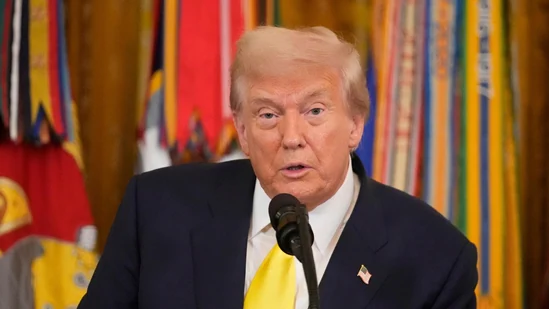“Forging a New Strategic Alliance: South Korea’s President Lee Meets Trump in Washington on August 25, 2025 On August 25, 2025, South Korean President Lee Jae-Myung will travel to Washington, D.C., for a pivotal summit with President Donald Trump. The meeting is poised to reshape the U.S.–South Korea relationship, addressing pressing economic, security, and geopolitical challenges.
2. Setting the Scene: Why Now?
Lee’s Presidency and Urgency for Alliance Reinforcement
- Fresh Leadership: Lee Jae-Myung assumed office on June 4, 2025, following a snap election. Within just over two months, he is set to hold a high-stakes summit with Trump—highlighting the urgency attached to U.S.–ROK relations.
- Global Shifts: A rapidly changing international environment, marked by heightened tensions in Northeast Asia, has made reaffirming strategic alliances a priority.
The Trade Agreement: A Precursor to the Summit
- Tariff Adjustment: In late July, Trump finalized a trade deal reducing tariffs on South Korean goods from 25% to 15%.
- Economic Commitments: As part of the deal, South Korea agreed to invest $350 billion in U.S. projects and purchase $100 billion in American energy.
These developments laid the groundwork for a deeper, multi-dimensional summit aimed at building a future-oriented strategic alliance.
3. Agenda Highlights: What’s on the Table?
a. Economic Cooperation & Trade
- Expanding Industrial Collaboration: Key sectors like semiconductors, batteries, shipbuilding, critical minerals, and emerging technologies are expected to dominate discussions.
b. Investment Strategy and Hot Buttons
- Unresolved Deal Elements: Disagreements remain over profit distribution, investment structure, and agricultural market access, reflecting the absence of a finalized written agreement.
- Trump’s Expectations: The U.S. side anticipates that South Korea will unveil robust investment plans at the summit.
c. Defense, Security, and Alliance Modernization
- North Korea Threat: Nuclear proliferation and Pyongyang’s alliances with Russia continue to intensify security concerns.
- Troop Presence and Cost-Sharing Pressures: With ~28,500 U.S. troops stationed in South Korea, Trump may press for heightened defense spending, potentially raising South Korea’s share from 2.6% to 3.8% of GDP .
- Alliance Modernization: U.S. officials, including Gen. Xavier Brunson, emphasize prioritizing capabilities over troop numbers and enhancing strategic flexibility .
d. Strategic Vision: A Future-Oriented Alliance
- Comprehensive Strategic Partnership: Both sides aim to recast the alliance toward inclusivity—covering economic, technological, and security cooperation.
- Potential for Joint Declaration: Officials are discussing whether to release a joint statement outlining their shared vision, including trilateral cooperation with Japan.
4. Diplomacy in Motion: Negotiations Behind the Scenes
Timeline and Coordination
- Since July, officials from both Seoul and Washington have coordinated the summit’s date, agenda, and logistics, culminating in a finalized meeting time of August 25.
- Lee is expected to arrive around August 24, and the visit will extend for three to four days, possibly including a wreath-laying ceremony at the Arlington National Cemetery.
Diplomacy and Media
- South Korean Foreign Minister Cho Hyun has played a key role in coordinating the summit’s content and timeline with U.S. Secretary of State Marco Rubio via working-level channels.
- Domestic and international media continue monitoring developments, with Reuters, AP, and multiple Korean outlets providing detailed updates.
5. Potential Outcomes and Risks
Opportunities
- Deepening Industrial Ties: Strengthening collaboration in strategic sectors boosts economic resilience for both nations.
- Clear Defense Posture: Modernizing alliance dynamics may better address evolving threats.
- Trilateral Momentum: A positive outcome could stimulate South Korea–U.S.–Japan coordination.
Challenges
- Unresolved Trade Issues: Disputes over profits, non-tariff barriers, and agriculture may strain talks.
- Defense Spending Pushback: Raising contributions may provoke domestic resistance in South Korea, given public sensitivities on military costs.
- Geopolitical Balancing: Seoul must navigate increasing pressure from U.S. shifts while sustaining regional stability with China and North Korea.
6. Strategic Significance
This summit is more than ceremonial—it marks a watershed moment:
- Lee’s Demonstration of Diplomacy: Establishing alliances early in his tenure strengthens South Korea’s global posture.
- U.S. Alliance Strategy: Trump’s push to modernize and economic-orient the alliance signals a shift in post-war diplomacy.
- Regional Signaling: The summit sends key messages to North Korea, China, and regional partners about evolving security dynamics.
7. Looking Ahead
- Post-Summit Dynamics: Watch for announcements on joint agreements, trilateral cooperation, or specific investment commitments.
- Public Reception: Domestic reactions in South Korea—ranging from pride in international stature to skepticism over defense burdens—could shape policy momentum.
- Broader Impact: The summit’s tone will influence subsequent U.S.–Asian engagements and potentially impact multilateral forums like APEC.



